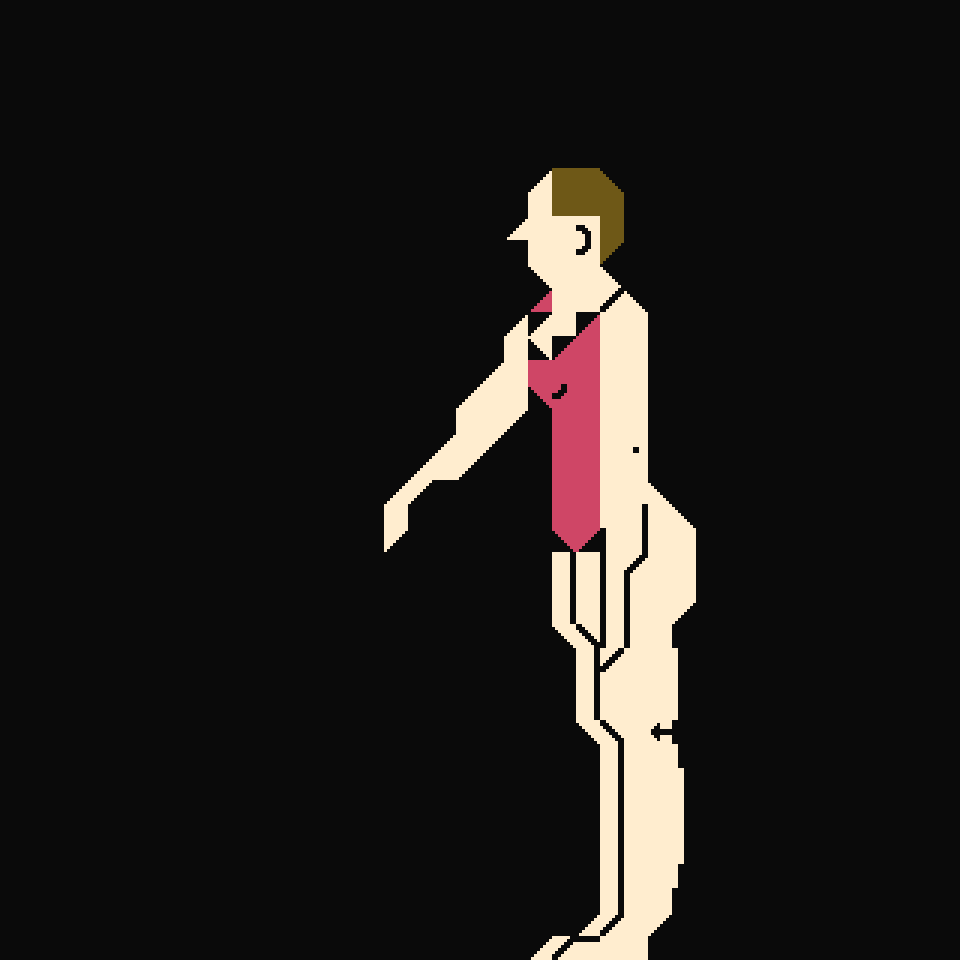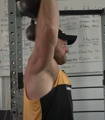Yogi or Gymnast or Weightlifter? Mobility vs Flexibility
The Difference Between Flexibility And Mobility
Range of motion is moving through a prescribed pattern without having any issues. I believe it is very important to be able to stop and start at different degrees without having any issues. In addition, flexibility and mobility factor into not only health but sports performance as well.
For sports performance, greater mobility can help an athlete move through greater ranges of motion, which is imperative with a whole bunch of sports, like wrestling, football, and field hockey. Let’s take weightlifting for example. Imagine two athletes can pull a snatch to the exact same height with the exact same weight, but weightlifter B has better mobility than weightlifter A which allows them to catch the weight in a deeper position. Over time, weightlifter B will probably have fewer injuries but will also be able to snatch more weight because they can catch in a deeper position. Think about wrestling. A wrestler with low hips helps them to get better leverage over their opponent. Think about football. Linemen with better hip positions can have better leverage and power positions when someone comes off the edge.
Let’s switch to thinking about shoulder mobility. Take me for example, I struggle to get a long stroke freestyle swimming and even have to compensate by rotating my torso more. An elite swimmer, like Michael Phelps, can have a longer stroke without compensating for their technique leading to greater stroke output and better positioning with their posture in the pool. This thought process is similar to hip mobility and dynamic trunk control. Think about Connor Renfro setting up a defensive player. With his hip mobility, he can set the defender up. He can then juke because of his hip mobility, dynamic trunk control, and his ankle mobility in deep cuts.

Health And Longevity
As we age, we want to have long muscles. Longer muscles allow us to be more mobile and we can handle various things that might happen as we age. Think about older people that walk rigidly. They lose that subtleness that comes about from proper training through full ranges of motion or doing different things like yoga. Ideally, an elderly person who trained their body might fare much better as they age into their 60s and 70s and 80s so that in case of a slip and fall they don’t have the catastrophe of breaking a hip because of banking health throughout a lifetime of training.
Typically people with muscles also spend more time being active. Being active tends to lead to a longer, healthier, and happier life. Using slipping on ice as an example, when a muscle is stretched rapidly, it can lead to a catastrophic injury if the individual isn’t training with a high degree of force, with high intensity, and through a full range of motion. At Garage Strength, we have individuals over the age of 60 still doing weightlifting movements. It is important that as they age they stay healthy and can handle different things without having a bad injury.

Health And Longevity
As we age, we want to have long muscles. Longer muscles allow us to be more mobile and we can handle various things that might happen as we age. Think about older people that walk rigidly. They lose that subtleness that comes about from proper training through full ranges of motion or doing different things like yoga. Ideally, an elderly person who trained their body might fare much better as they age into their 60s and 70s and 80s so that in case of a slip and fall they don’t have the catastrophe of breaking a hip because of banking health throughout a lifetime of training.
Typically people with muscles also spend more time being active. Being active tends to lead to a longer, healthier, and happier life. Using slipping on ice as an example, when a muscle is stretched rapidly, it can lead to a catastrophic injury if the individual isn’t training with a high degree of force, with high intensity, and through a full range of motion. At Garage Strength, we have individuals over the age of 60 still doing weightlifting movements. It is important that as they age they stay healthy and can handle different things without having a bad injury.
Flexibility & Mobility
In the simplest terms, flexibility is holding a position or a movement pattern passively. For instance, sitting cross-legged without actively trying to hold a position is a form of passive flexibility. It is nice and easy. Flexibility can also entail how far a joint can move by being gently forced through a position. For example, move your thumb backward toward the forearm. Use your other hand to move the thumb back as far as possible. That is the degree of flexibility the joint in your thumb has. Now, using just your thumb, move your thumb back as far as possible. Not as far, right? That is your mobility.
Mobility is being able to move actively and stable through a full range of motion and having different joints that can be stable there. Doing an overhead squat asks for mobility and stability from the hips, ankles, lower back, shoulders, and thoracic spine.
Mobility takes into account the component of motor control.
In the simplest terms, flexibility is holding a position or a movement pattern passively. For instance, sitting cross-legged without actively trying to hold a position is a form of passive flexibility. It is nice and easy. Flexibility can also entail how far a joint can move by being gently forced through a position. For example, move your thumb backward toward the forearm. Use your other hand to move the thumb back as far as possible. That is the degree of flexibility the joint in your thumb has. Now, using just your thumb, move your thumb back as far as possible. Not as far, right? That is your mobility.
Mobility is being able to move actively and stable through a full range of motion and having different joints that can be stable there. Doing an overhead squat asks for mobility and stability from the hips, ankles, lower back, shoulders, and thoracic spine.
Mobility takes into account the component of motor control.
Motor Control
Think about flexibility as being under the umbrella of mobility. If we can train flexibility properly, with some type of load (like what weightlifters do), the load can lead to greater flexibility and tremendous improvement in mobility because training is being done with the motor control component.

Application
Yogis might be very flexible. They have good strength-endurance and can hold positions for long periods. However, sometimes yogis lack motor control in those mobile positions with high intensity. Putting a lot of weight on a yogi might cause them to struggle to handle those positions with those loads.
Weightlifters, bodybuilders, and gymnasts tend to train with very mobile positions at really, really high speeds. Training at those high speeds also allows them to be able to handle more intensity. More intensity means more load and more force. Now bodybuilders follow the mantra that lengthening is strengthening. The more mobile a bodybuilder is and the more weight they can handle the bigger their muscle bellies will become to look great on the stage. Gymnasts and weightlifters both train intensely at high speeds through great ranges of motion.
Athletes can improve their overall flexibility by doing different types of static stretching and different types of movements through the needed full range of motion. Lagging areas can be specifically targeted through passive, flexible work. Then as the lagging position becomes more flexible, training can be done in deeper ranges of motion. In turn, training in deeper ranges of motion will help athletes to produce more force in more ranges of motion which will lead to better performance.
Exercises
In sports and life, having flexibility and mobility can prevent catastrophic injuries; it can also lead to a greater quality of existence. Here are five ways to improve your overall mobility.
1. Yoga
Do yoga 5 to 6 days a week to improve passive flexibility and mental focus.
2. Calisthenics
Do regular calisthenic exercises, like a pistol squat, through a full range of motion to improve mobility and body control.
3. Kettlebell Rotating Presses
Do regular strength training with kettlebells. One of my favorite exercises for mobility work is doing rotating thoracic presses. The movement helps with thoracic rotation and is great for opening up that upper back.

4. Overhead Squats
Pair the kettlebell rotating presses with overhead squats. Overhead squats done in a deep position helps the body be more mobile, wake up the upper back, lengthen the pecs, and will lead to greater performance in the chest.
5. Unilateral Strength Exercises
Hip mobility can always be improved by training unilaterally with strength exercises like the single leg squat. A single-leg squat improves overall stability and improves speed for greater performance.
Recap
Mobility and flexibility are very similar but can lead to vastly different results depending upon goals. So make sure to keep improving your full range of motion to prevent injury and lengthen your muscles to lead to a greater muscle belly.
Related Posts
Blog Topics

Yo, It's Dane
Welcome to the Garage Strength Blog, where it is my goal to provide you with the experience and knowledge I've gained in the strength and conditioning world over many years of learning from both successes and failures. I train elite-level athletes in a multitude of sports from the high school to professional levels, already producing 5 Olympics and 30+ National Champions. If you want to be the next champion I train, check out my strength programs below!
Start Training With Me

Join for free educational videos EVERY WEEK on strength coaching and athletic performance



